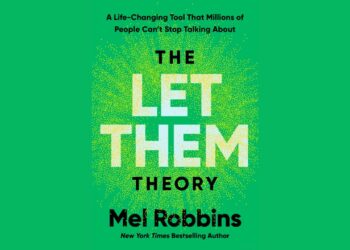Table of Contents
- The Digital Analogy of the Mind
- Chapter 1: Understanding the Operating System of the Mind
- Chapter 2: The Subconscious Mind as the Core Processor
- Chapter 3: The Illusion of Reality and the Power of Perception
- Chapter 4: Reprogramming Thought Patterns
- Chapter 5: Energetic Frequencies and the Mind
- Chapter 6: Freeing Yourself from Fear-Based Conditioning
- Chapter 7: The Role of Belief Systems in Creating Reality
- Chapter 8: Consciousness and the Power of Now
- Chapter 9: Detoxifying the Mind
- Chapter 10: Reclaiming Inner Power
- Chapter 11: Creating the New You
- Final Thoughts: Becoming the Architect of Your Reality
- Practical Tools and Takeaways:
The Digital Analogy of the Mind
Ramzi Najjar, in How to Hack Back Your Mind: Reclaim Control Over Your Life, presents a compelling perspective on how the human mind functions much like a computer. Just as software can be manipulated, corrupted, or reprogrammed, so can our thoughts, beliefs, and perceptions. This book is not just a self-help guide—it’s a philosophical and psychological call to action urging readers to take control of the most powerful tool in existence: their own mind.
Najjar’s central thesis is that we are all, to varying degrees, victims of external programming. Media, culture, social conditioning, fear, trauma, and even education often serve to implant belief systems that run on autopilot. By identifying these influences, and then “hacking” them, we can rewrite our internal code, reclaim our freedom, and live consciously.
Chapter 1: Understanding the Operating System of the Mind
Najjar starts by likening the human mind to an operating system. We are born with certain capacities—curiosity, adaptability, imagination—but these are soon overridden by social conditioning. From childhood, we are bombarded with information, often rooted in fear, competition, and limitation.
He emphasizes that thoughts are not facts. Most of what we believe is a product of repetition and emotional charge, not truth. These thoughts then generate emotions, which reinforce beliefs and lead to habitual actions. Breaking this loop begins with awareness.
Key Insights:
- Thoughts are impulses shaped by perception.
- The mind is programmable, and we are the programmers.
- Mental malware—false beliefs, fear, and societal imprints—create loops of dysfunction.
Chapter 2: The Subconscious Mind as the Core Processor
The subconscious mind is described as the “motherboard” of human behavior. Najjar explains that 95% of our decisions and reactions stem from subconscious programming. This programming often stems from childhood trauma, authority figures, and society’s scripts.
The subconscious does not reason; it only obeys. Thus, if it is filled with limiting beliefs, fear, and false identities, it will manifest those realities regardless of our conscious desires.
Najjar proposes methods of accessing the subconscious:
- Meditation: Quieting the mind to reveal hidden beliefs.
- Affirmations: Rewriting internal scripts through repetition.
- Visualization: Emotionally charging new beliefs.
Quote:
“You are not your thoughts. You are the awareness behind them.”
Chapter 3: The Illusion of Reality and the Power of Perception
This chapter explores how our perception shapes our experience of reality. Najjar references quantum physics and metaphysical concepts to argue that reality is not objective—it is created through observation.
Media, education, and social narratives manipulate perception. For example, a person constantly fed images of war, economic fear, and disease will see the world as hostile. This belief becomes their reality.
Najjar introduces the concept of mental sovereignty—the ability to filter external inputs and question the validity of every idea before letting it enter your mental space.
Key Concepts:
- Perception = Reality.
- Fear is a mental virus, spread through repeated exposure.
- The power of discernment is your firewall.
Chapter 4: Reprogramming Thought Patterns
To “hack back” your mind, you must become an active participant in the programming process. Najjar offers actionable techniques to overwrite existing belief systems.
Steps to Reprogram the Mind:
- Awareness: Identify recurring negative thoughts.
- Interrupt: Pause the thought loop with a pattern break (e.g., deep breath, mantra).
- Replace: Install a new, empowering belief in its place.
- Reinforce: Use repetition, emotion, and action to anchor the new pattern.
He discusses neuroplasticity—the brain’s ability to rewire itself through consistent mental and behavioral input.
Quote:
“What you focus on expands. Feed your mind only what you want to see in your world.”
Chapter 5: Energetic Frequencies and the Mind
In this spiritual-scientific fusion, Najjar delves into how thoughts have vibrational frequencies. Love, gratitude, and joy vibrate higher than fear, anger, and guilt.
Your dominant thoughts affect your energy field, which in turn shapes your physical health, relationships, and outcomes.
High Vibration Practices:
- Daily gratitude journaling
- Surrounding yourself with positivity
- Letting go of resentment and guilt
- Being present in the moment
Najjar urges readers to “tune in” to frequencies that elevate rather than drain.
Chapter 6: Freeing Yourself from Fear-Based Conditioning
Fear is the most powerful tool used in mental programming. Governments, religions, media, and even well-meaning parents often rely on fear to control behavior.
Najjar outlines the sources of fear-based thinking:
- Fear of rejection
- Fear of failure
- Fear of the unknown
- Fear of death
He argues that fear disconnects us from our intuition and keeps us trapped in survival mode. By recognizing fear as an illusion, one can reclaim inner power.
Techniques to Overcome Fear:
- Exposure therapy
- Rational questioning (“Is this really true?”)
- Physical movement (e.g., cold showers, exercise)
- Breathwork
Chapter 7: The Role of Belief Systems in Creating Reality
Beliefs are not truths; they are repeated thoughts with emotional weight. Najjar teaches that our reality is the sum total of our beliefs—many of which are inherited, unchallenged, and outdated.
Common Disempowering Beliefs:
- “I’m not good enough.”
- “Money is evil.”
- “The world is unsafe.”
- “I must suffer to succeed.”
Replacing these with conscious, empowering beliefs requires:
- Emotional detachment from the old belief
- Evidence of the opposite
- Daily commitment to mental upgrades
Najjar calls this process belief hacking, and it’s central to reclaiming mental freedom.
Chapter 8: Consciousness and the Power of Now
Najjar explores conscious living—being fully present in the now without being hijacked by past trauma or future anxiety.
Most people are not living—they are merely reacting to mental projections. By grounding awareness in the present, you weaken the ego and tap into your true essence.
He encourages mindfulness practices, stillness, and inner silence to reconnect with the “observer” self—the unchanging awareness behind the thoughts.
Quote:
“When you realize you are not your story, your healing begins.”
Chapter 9: Detoxifying the Mind
Just as the body needs detox, so does the mind. Najjar provides a practical mental detox plan:
- Digital Detox: Limit exposure to social media, news, and fear-driven content.
- Mental Diet: Consume positive, uplifting, and thought-provoking information.
- Thought Journaling: Track daily thoughts and assess their usefulness.
- Environment Audit: Spend time with people and in spaces that elevate your frequency.
Najjar argues that a cluttered mind cannot produce clarity. Just as a cluttered desk breeds chaos, so too does a mind filled with conflicting programming.
Chapter 10: Reclaiming Inner Power
By this point, Najjar calls on the reader to take radical responsibility for their life. This means owning your reactions, your outcomes, and your inner state.
Reclaiming power involves:
- Accepting that no one is coming to save you.
- Letting go of victim consciousness.
- Trusting your inner voice over external noise.
- Taking daily actions aligned with your reprogrammed mindset.
Najjar reaffirms: Freedom is not found in rebellion—it is found in awareness and self-mastery.
Chapter 11: Creating the New You
The book culminates in a vision of the reprogrammed self—free, conscious, grounded, and powerful.
This version of you:
- Chooses thoughts consciously
- Responds rather than reacts
- Lives in alignment with values
- Is no longer controlled by fear, media, or the past
Najjar asserts that you can create a new identity at any time. Personality is not fixed—it is fluid. Repetition, emotional involvement, and belief can reforge even the deepest identities.
Visualization Exercise:
- Envision your highest self daily.
- Step into their mindset, habits, and decisions.
- Reinforce this identity through action and embodiment.
Final Thoughts: Becoming the Architect of Your Reality
How to Hack Back Your Mind is ultimately about self-ownership. Najjar challenges you to confront the uncomfortable truth that much of your suffering stems from unconscious programming. But he also offers liberating hope: with awareness, intention, and discipline, you can rewrite the story.
The book blends spirituality, neuroscience, psychology, and metaphysics to deliver a powerful roadmap for anyone who feels stuck in limiting patterns.
Najjar’s writing is not hand-holding—it’s a jolt to the system. It forces you to think, to observe, and to finally act. His message is clear:
“You were never broken. You were just programmed wrong. Now you have the power to fix the code.”
Practical Tools and Takeaways:
| Tool | Description |
|---|---|
| Thought Journaling | Record dominant thoughts and track patterns. |
| Affirmation Practice | Replace negative thoughts with chosen beliefs. |
| Meditation | Develop awareness and connect to observer self. |
| Mental Fasting | Reduce external input to regain clarity. |
| Belief Hacking | Question and rewrite old belief systems. |
| Emotional Rewiring | Release trauma through breathwork and movement. |
| Mindful Media Consumption | Avoid fear-inducing content and choose inspiration. |
Conclusion:
Ramzi Najjar’s How to Hack Back Your Mind is a manual for mental freedom in an age of information overload and psychological manipulation. Through awareness, intentional reprogramming, and conscious living, we can escape mental slavery and create a life of authenticity, peace, and purpose.




















